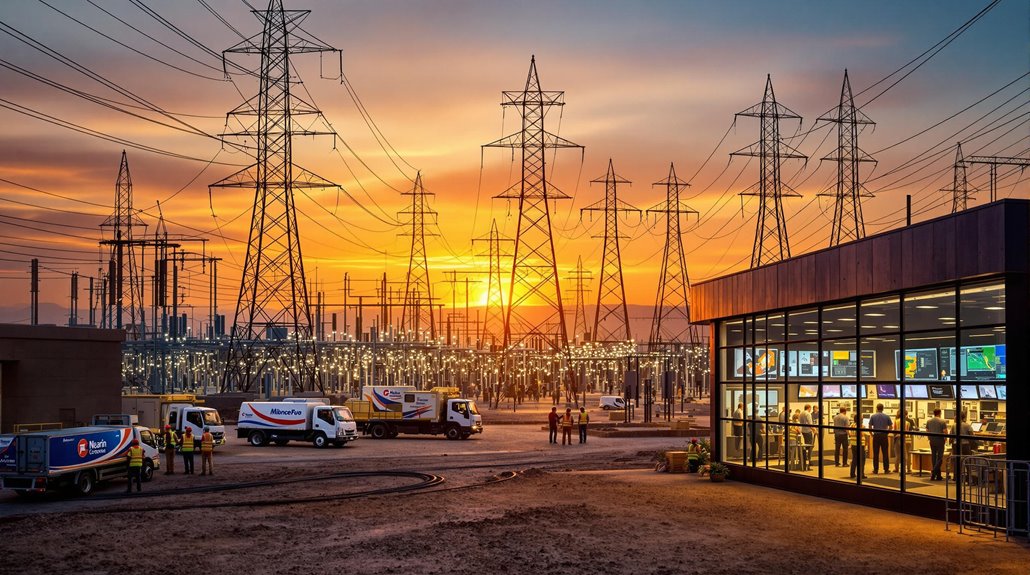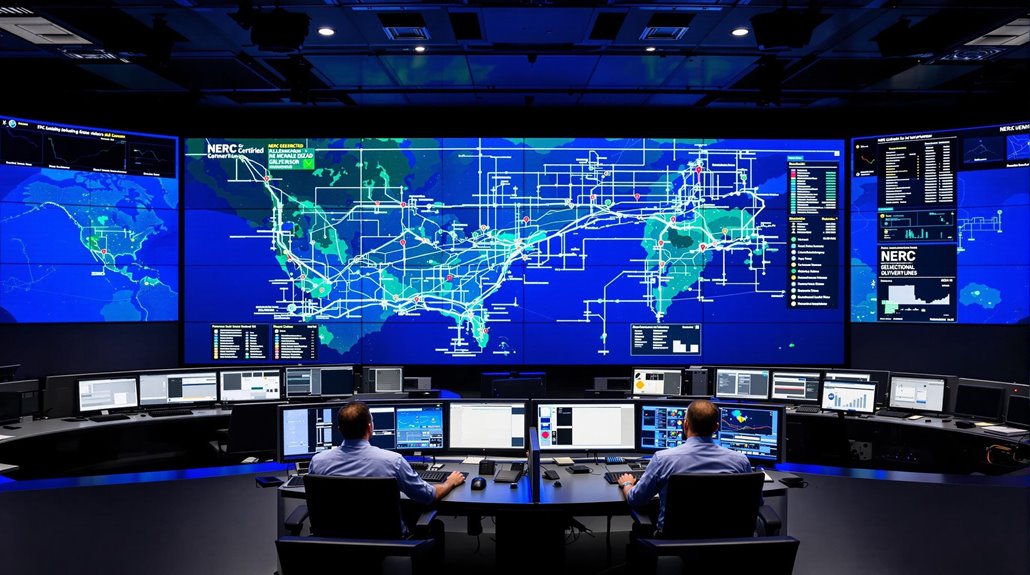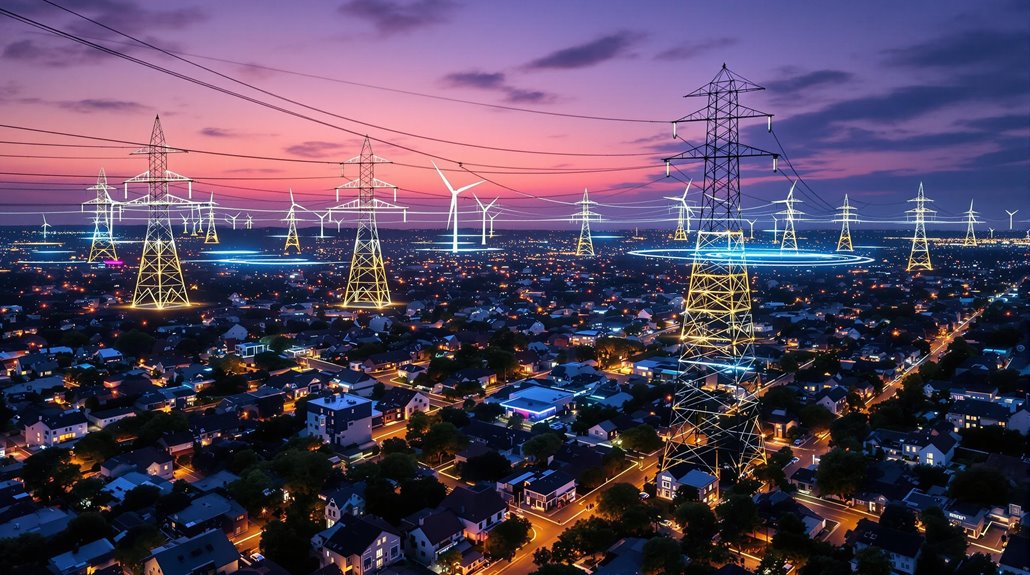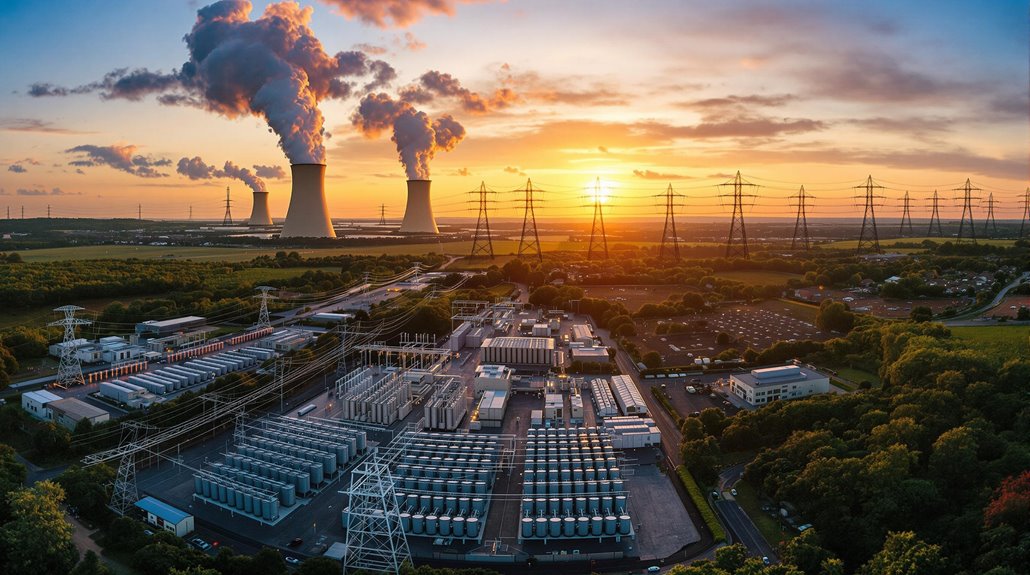Who Manages the Electrical Grid in the United States?

Your electricity flows through a complex system managed by multiple organizations working together. The U.S. power grid splits into three major interconnections (Eastern, Western, and Texas), with regional transmission organizations (RTOs) and independent system operators (ISOs) handling day-to-day operations. State utility commissions oversee local distribution, while federal regulators like FERC and NERC set standards and monitor compliance. Understanding this layered structure reveals how your power stays reliable.
| Organization | Role | Key Responsibilities |
|---|---|---|
| Major Grid Interconnections | ||
| Eastern Interconnection | Largest power grid covering the eastern U.S. & parts of Canada | Manages 700 GW of power, ensures stability with high-voltage DC ties |
| Western Interconnection | Manages power grid across the western U.S. & Canada | Maintains grid reliability and inter-regional power transfers |
| Texas Interconnection (ERCOT) | Independent power grid serving Texas | Controls generation & distribution within Texas without federal oversight |
| Regional Transmission Organizations (RTOs) & Independent System Operators (ISOs) | ||
| PJM Interconnection | RTO covering the Mid-Atlantic & Midwest | Manages electricity markets & grid reliability for 65 million people |
| Midcontinent Independent System Operator (MISO) | RTO covering the Midwest & parts of the South | Coordinates transmission operations & regional power flow |
| New York Independent System Operator (NYISO) | ISO managing New York’s power grid | Handles real-time electricity markets & grid planning |
| California Independent System Operator (CAISO) | ISO managing California’s electric grid | Oversees wholesale electricity markets & grid reliability |
| Electric Reliability Council of Texas (ERCOT) | ISO managing the Texas grid | Ensures power supply balance, oversees energy trading |
| Regulatory Bodies | ||
| Federal Energy Regulatory Commission (FERC) | Primary federal electricity regulator | Sets reliability standards, regulates wholesale markets, oversees transmission projects |
| North American Electric Reliability Corporation (NERC) | Sets reliability standards for North America | Monitors compliance, analyzes grid performance & disturbances |
| State Public Utility Commissions | State-level oversight of electricity providers | Regulates power distribution, sets utility rates, approves new grid projects |
| Electric Utilities & Market Participants | ||
| Electric Utilities | Operate local transmission & distribution networks | Deliver electricity to homes & businesses, maintain power lines |
| Independent Power Producers | Generate electricity for sale in competitive markets | Supply energy to utilities & RTO-managed markets |
| Retail Electricity Providers | Sell electricity to consumers in deregulated markets | Offer pricing plans, compete with traditional utilities |
The Three Major Grid Interconnections
While most Americans rarely think about where their electricity comes from, the U.S. power grid consists of three major interconnections that work together to deliver power across the continent. These interconnections form the backbone of electric power transmission and reliability across North America.
The Eastern Interconnection is the largest, covering from Saskatchewan to the Atlantic coast with 700 GW of generating capacity. You'll find the Western Interconnection spanning the western U.S. and Canada, while the Texas Interconnection (ERCOT) operates independently within the Lone Star State. Regional Transmission Organizations and Independent System Operators manage these grids under North American Electric Reliability standards.
Each interconnection operates at 60 Hz frequency, with high-voltage DC ties enabling power sharing between regions. This structure guarantees reliable electricity delivery while maintaining regional control over transmission systems. With components averaging 40-50 years old, the aging infrastructure of these interconnections faces increasing risks of failure and vulnerability to extreme weather events.
Regional Transmission Organizations and Independent System Operators
When you flip a light switch, a complex network of organizations guarantees that power flows reliably to your home. Six major grid operators, known as Regional Transmission Organizations (RTOs) and Independent System Operators (ISOs), manage the transmission grid across two-thirds of America's electricity customers. These include PJM Interconnection, Midcontinent Independent System Operator (MISO), and the Electric Reliability Council of Texas (ERCOT), among others.
Under Federal Energy Regulatory Commission (FERC) oversight, these organizations coordinate power generation, verify open access to transmission lines, and operate electricity markets in their regions. While the New York Independent System Operator (NYISO) manages New York's grid, areas without RTOs or ISOs rely on traditional utility companies to maintain reliable power delivery.
Together, these organizations keep America's lights on through sophisticated grid management systems. The 2003 Northeast Blackout demonstrated how crucial these operators are, as a single failed transmission line in Ohio cascaded into a massive power outage affecting 50 million people.
State-Level Oversight and Public Utility Commissions

Beyond the regional grid operators, state public utility commissions form another essential layer of electricity sector management. These state regulators oversee the power sector within their borders, making key decisions about new electric grid projects and setting the rates you'll pay for electricity service.
Each public utility commission includes governor-appointed officials who serve multi-year terms and conduct public hearings to make important regulatory decisions. In traditionally regulated states, they maintain full authority over utilities that handle power generation, transmission, and distribution. Even if you live in a state with competitive electricity markets, state regulators still supervise the distribution systems and enforce reliability standards.
Their primary goal is to guarantee you receive safe, reliable, and affordable power service, whether you're a resident or business owner. They help ensure homes receive standardized 120-volt AC power that safely powers everyday appliances and devices.
Federal Energy Regulatory Commission's Role
The Federal Energy Regulatory Commission (FERC) serves as America's central authority for managing interstate power transmission and wholesale electricity markets. As the primary federal regulator, FERC works closely with Regional Transmission Organizations (RTOs) and Independent System Operators (ISOs) to guarantee the reliable operation of the nation's power system.
You'll find FERC's oversight extends to several pivotal aspects of energy production and electricity transmission. The commission sets mandatory reliability standards for the grid, regulates wholesale power prices, and approves utility company mergers. Additionally, FERC's responsibilities include overseeing interstate transmission lines and the construction of natural gas infrastructure. Through its partnerships with organizations like the American Electric Reliability Corporation (NERC), FERC maintains the stability and efficiency of the complex network that delivers power to your home. This robust regulatory framework helps prevent scenarios like India's 2001 blackout, where outdated transmission equipment contributed to a massive power failure affecting 230 million people.
NERC Standards and Compliance Monitoring

Mandatory reliability standards form the backbone of NERC's mission to protect North America's power grid. Through its network of eight regional entities, NERC monitors compliance across the bulk power system and guarantees utility stakeholders maintain grid resilience. You'll find that NERC's thorough approach includes analyzing grid disturbances and evaluating resource adequacy through long-term planning.
- Grid operators conducting real-time system monitoring from control centers
- Engineers performing detailed compliance audits at power plants
- Analysts reviewing data from thousands of interconnected facilities
- Technical experts investigating system failures and disturbances
- Regional coordinators working with local utilities to maintain standards
When you understand NERC's role, you'll see how their reliability standards create a structure for maintaining a stable power grid. They work closely with regulators and utilities to address emerging challenges and implement lessons learned from past events.
Electric Utilities and Market Participants
Multiple entities work together to keep America's electrical grid running smoothly, with electric utilities serving as the primary interface between power generation and consumers. These utilities operate power plants and manage transmission and distribution systems to deliver electricity to your home or business.
The power grid's operation involves several key players: electric utilities handle local service, while Regional Transmission Organizations (RTOs) and Independent System Operators (ISOs) coordinate broader system operations across regions.
The Federal Energy Regulatory Commission oversees interstate power flow and safeguards fair grid access. In some areas, you'll find retail choice programs where independent power producers compete with traditional utilities to generate electricity. These operators must work in harmony to maintain reliable service, with RTOs managing the complex flow of electricity from various generation sources through the transmission system to local distribution networks.




